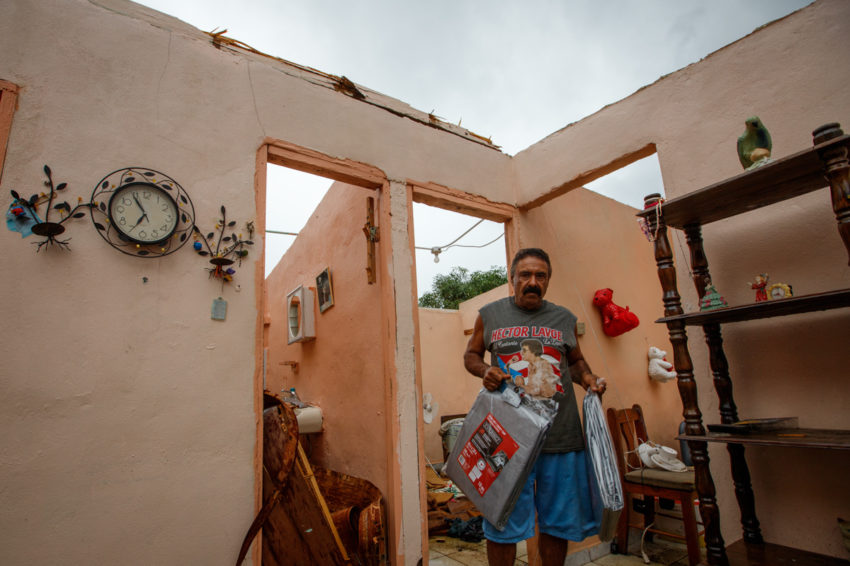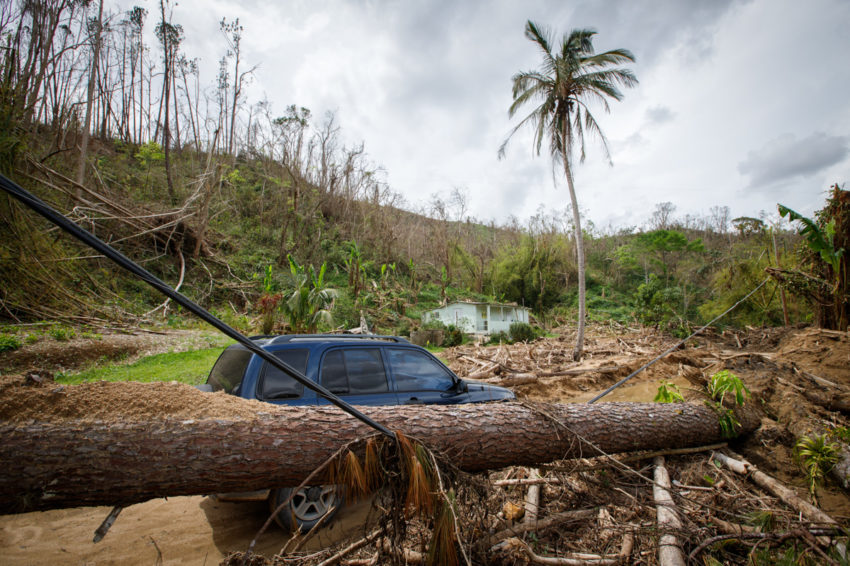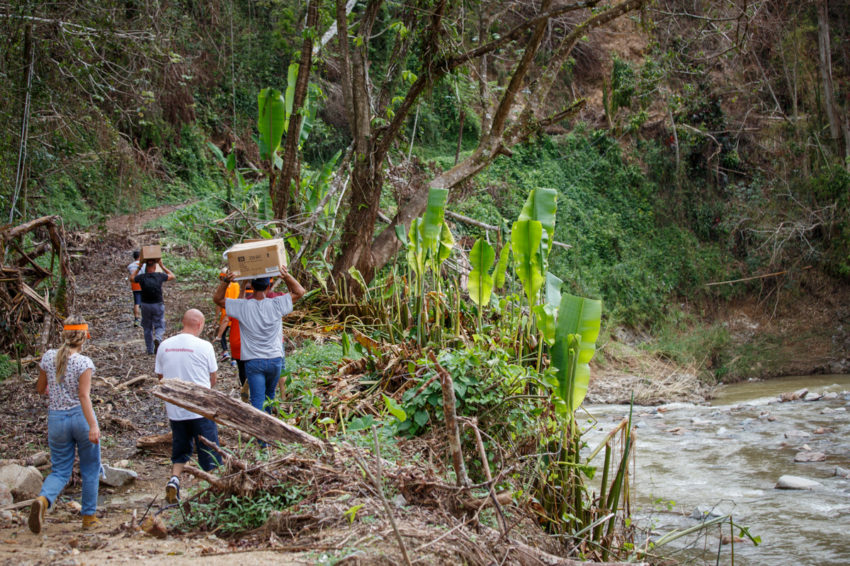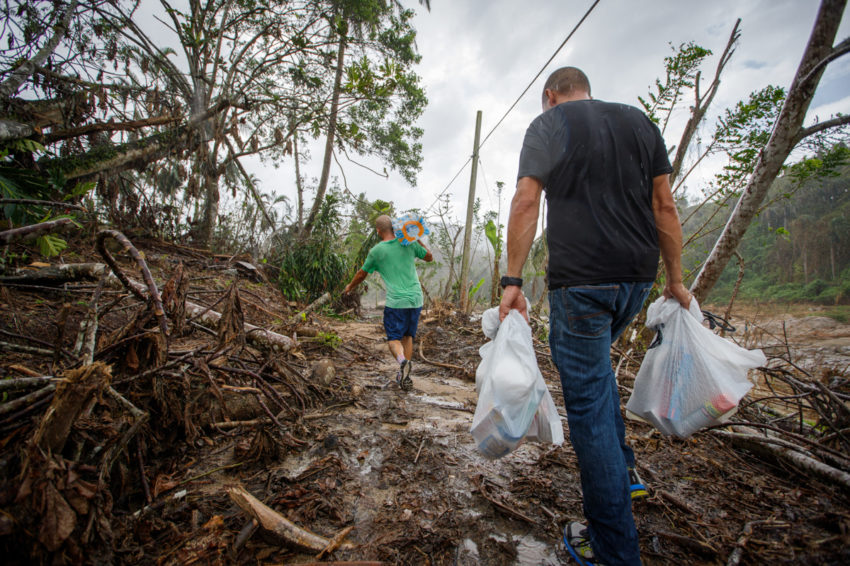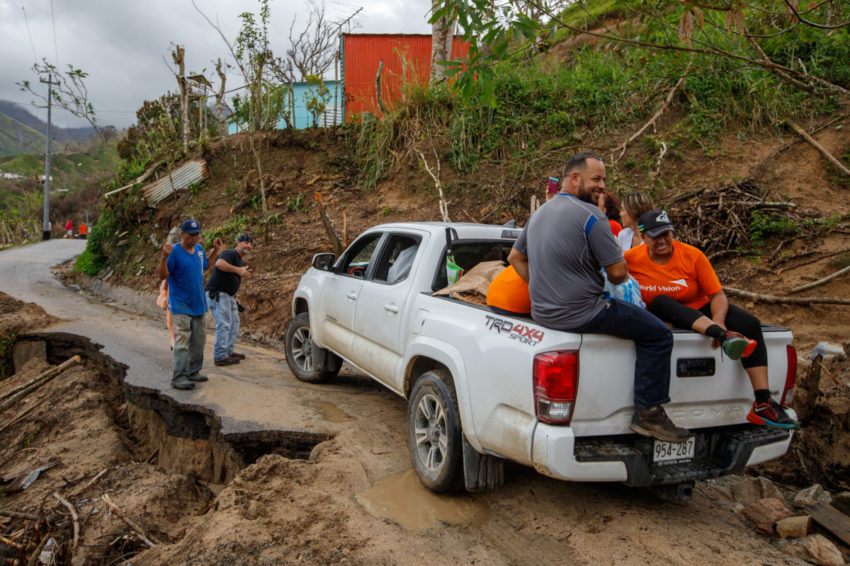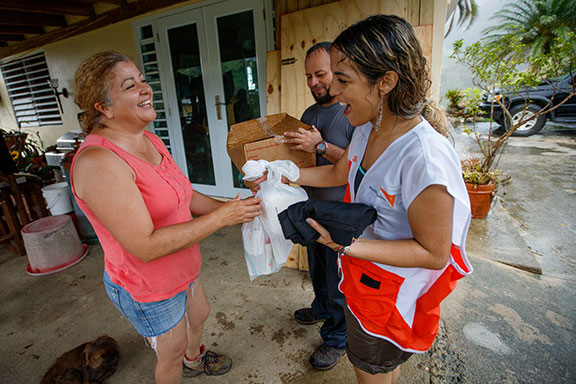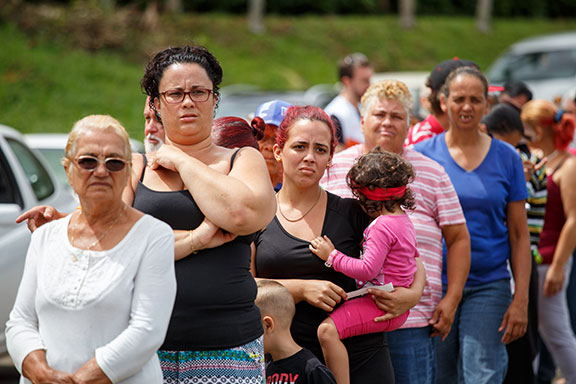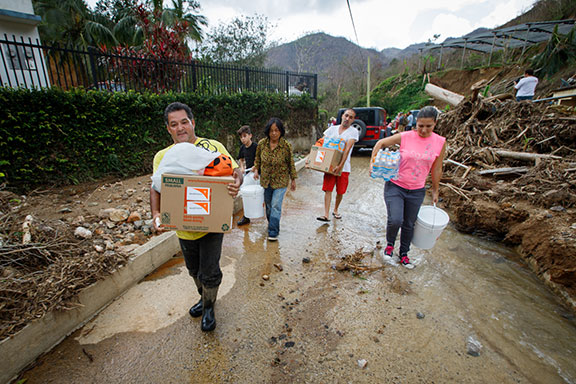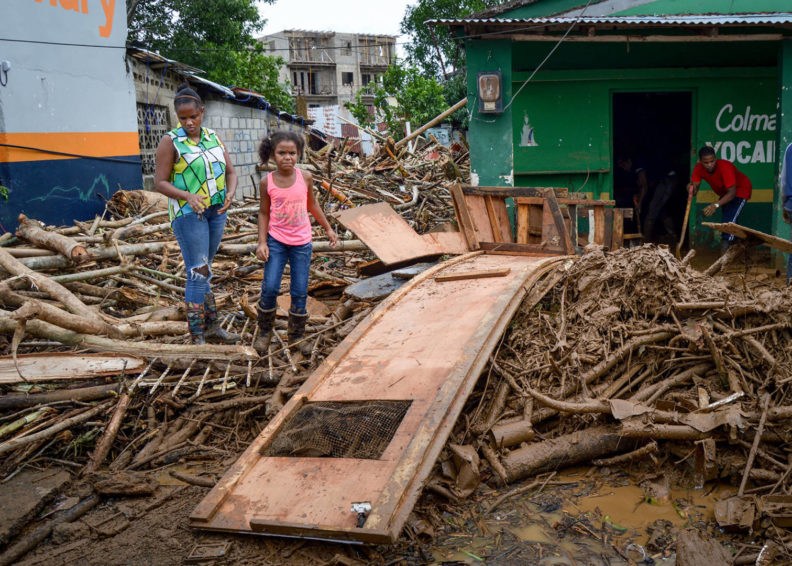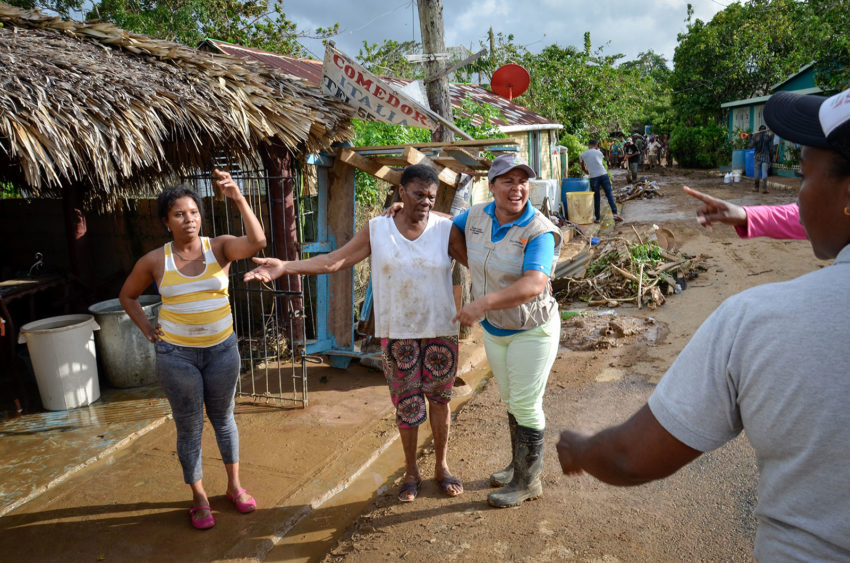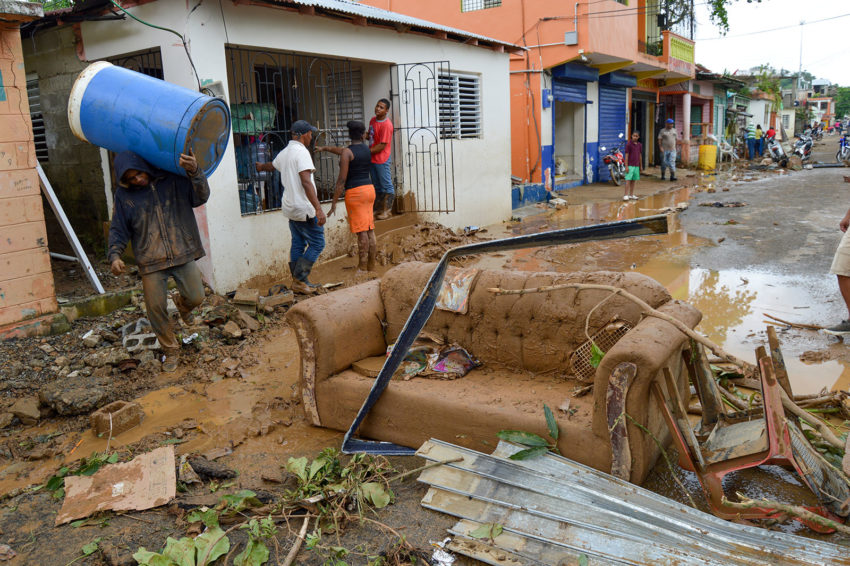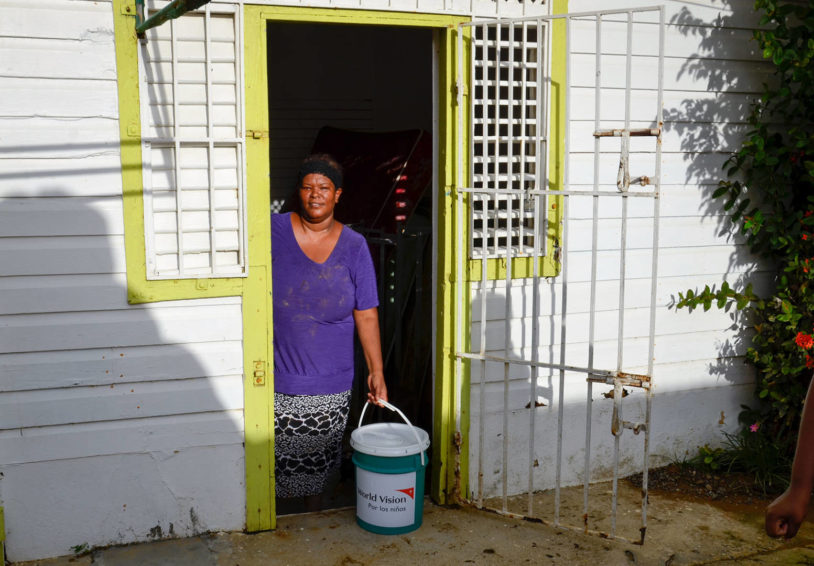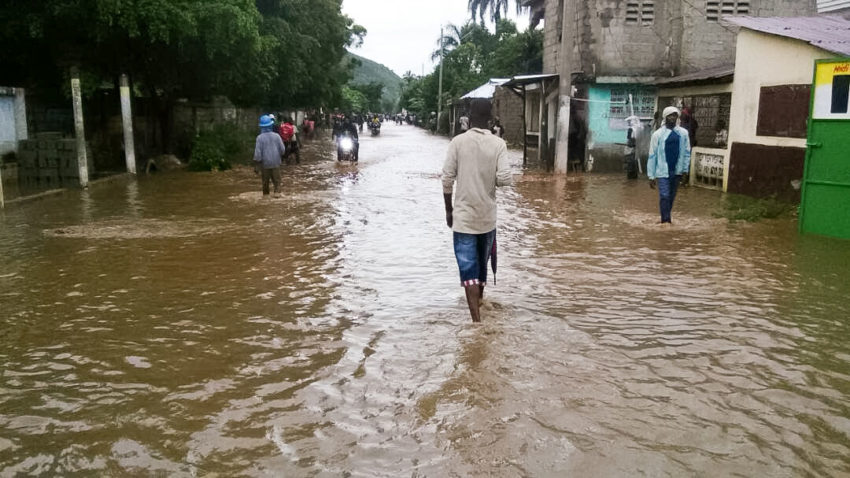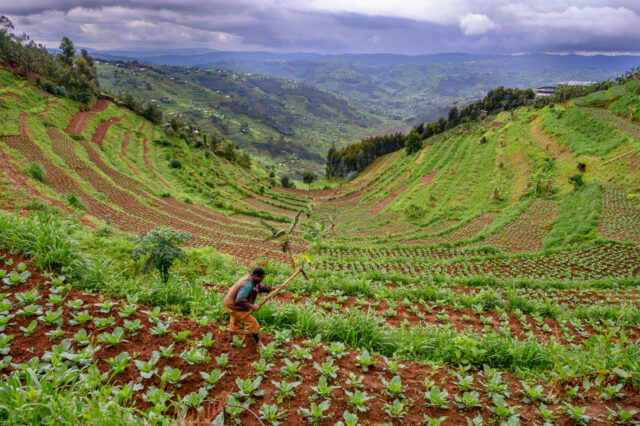Puerto Rico is devastated and struggling to recover after Hurricane Maria pummeled the island territory Sept. 20, 2017, as a Category 4 storm. As of April 4 — almost seven months since the storm hit — about 96% of residents on the island have had power restored, reports the U.S. Department of Energy. Still, roughly 62,000 people remain without power.
While the storm’s official death toll tallied 64 people, a new Harvard study published May 29 estimates that Maria and its aftermath is responsible for more than 4,600 deaths in Puerto Rico.
Between October 2017 and April 2018, World Vision reached 116,003 Puerto Ricans with critical food and relief items, cash assistance, disaster preparedness training, and child protection programs.
When disaster strikes, World Vision is there. Help us respond to disasters like Hurricane Maria.
FAQs: What you need to know about Hurricane Maria
Explore frequently asked questions about Hurricane Maria, and learn how you can help families impacted by hurricanes:
- How did Hurricane Maria develop?
- Did Hurricane Maria hit the U.S.?
- How many people died after Hurricane Maria?
- How much damage did Hurricane Maria cause?
- How did World Vision respond to Hurricane Maria?
- How many people has World Vision helped after Hurricane Maria?
- How can I help Hurricane Maria survivors?
How did Hurricane Maria develop?
Less than two weeks after Hurricane Irma and a month after Hurricane Harvey, Hurricane Maria hit numerous islands in the Caribbean.
It became a Category 3 storm Sept. 18 after doubling in strength in just 24 hours. Then it maintained its rapid growth, becoming a Category 5 storm with sustained winds of 175 mph Sept. 19 after making its way through the Leeward Islands.
It smashed into the Caribbean island of Dominica, causing what Prime Minister Roosevelt Skerrit called “mind-boggling” devastation in a region already devastated by Hurricane Irma. Maria was the strongest hurricane on record to make landfall in Dominica. “We have lost everything that money can buy, and that is a fact,” Prime Minister Skerrit said.
The French island of Martinique escaped Hurricane Maria largely unscathed, while the French island of Guadeloupe experienced widespread power outages.
Maria then directly hit Puerto Rico as a Category 4 with 155-mph winds, making it the third-strongest storm to make landfall in the U.S. It was even stronger than Hurricane Irma when it roared into the Florida Keys Sept. 10.
Maria — the strongest hurricane to hit Puerto Rico in more than 80 years — destroyed homes, roads, and bridges; knocked out power across the entire island; and triggered heavy flooding. Residents have lived through food and water shortages, water-related disease outbreaks, generators running out of fuel, hospitals and schools closed due to extensive damage, and in the immediate aftermath, lack of access to the banking system.
Maria also hit the Dominican Republic, Haiti, and Turks and Caicos, causing widespread flooding.
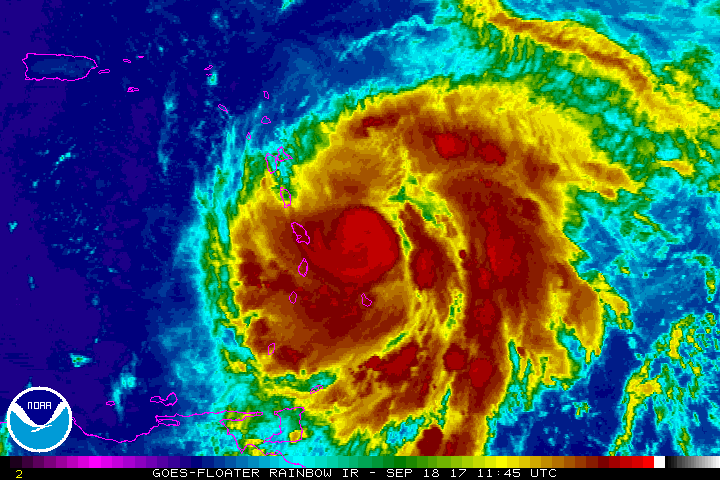
Did Hurricane Maria hit the U.S.?
The U.S. mainland was spared the wrath of Hurricane Maria and Hurricane Jose, which followed a similar path before fizzling out in the open ocean.
How many people died after Hurricane Maria?
Hurricane Maria left 64 people dead in Puerto Rico, officially, but it could be more than 4,600 due to complications in the post-storm recovery, according to a new Harvard University study. There were additional storm-related fatalities on the island of Dominica.
How much damage did Hurricane Maria cause?
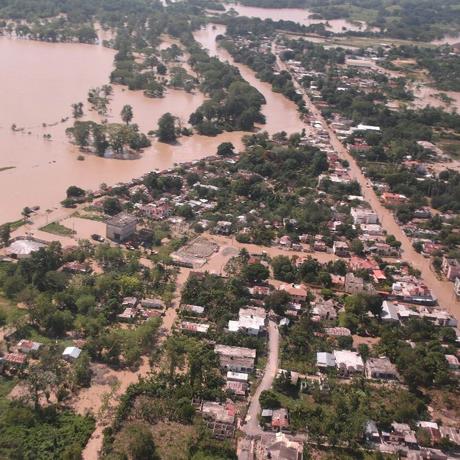
Puerto Rican authorities have requested $94 billion to cover damages from Hurricane Maria. Congress approved $5 billion in the fall of 2017 as part of an overall federal aid package of more than $36 billion allotted for hurricanes Maria, Harvey, and Irma.
The island’s entire population of 3.4 million people has been affected by Hurricane Maria.
“Months and months and months and months are going to pass before we can recover from this,” said Felix Delgado, mayor of the northern coastal city of Catano. Currently, Puerto Ricans lack sustainable sources of food, power, and income. Many residents have fled their precarious circumstances altogether to settle in mainland U.S. states. Hospitals and other public buildings also remain badly damaged. The two main elements of Puerto Rico’s economy, agriculture and tourism, have been devastated by the storm.
Maria also caused widespread flooding in the Dominican Republic and Haiti.
How did World Vision respond to Hurricane Maria?
World Vision initiated its response in Puerto Rico supported by a global rapid response team. Due to the scale of the need in Puerto Rico, we deployed two teams to connect with local partners and networks, including Urban Strategies and the National Latino Evangelical Coalition. Working with local partners strengthened our program implementation in Puerto Rico.
On Oct. 2, 2017, the initial response team began conducting assessments and providing local partners with support logistics near San Juan and in a hard-hit area on the central-eastern side of the island to make way for food and supplies distributions and cash programming.
World Vision’s direct response to Hurricane Maria phased out in April 2018. Our staff in Puerto Rico handed off responsibilities to newly trained community leaders, many who have served on the leading edge of our response since the storm hit. World Vision staff in the Dominican Republic also worked to help thousands of families displaced by the storm in the Miches and Santa Cruz El Seibo areas. Most lost everything due to flooding in the wake of Maria. There, we distributed hygiene kits and food kits.
How many people has World Vision helped after Hurricane Maria?
Between October 2017 and April 2018, World Vision reached 116,003 Puerto Ricans with critical food and relief items, cash assistance, disaster preparedness training, and child protection programs. That’s 38,668 households, mostly in and around Utuado, Morovis, Orocovis, and Patillas.
Hurricane survivors received food, water, hygiene kits, tarps, diapers, flood clean-up kits, and other household necessities like candles and solar lamps. We also provided Family-Friendly Spaces, where parents and children receive counseling and care to help them cope with their post-hurricane situation Our efforts to help Puerto Ricans build back better included training 16,476 students, teachers, and church leaders in disaster risk reduction, community resilience, and first responder best practices.
In addition, a World Vision corporate partner donated 150 household water filtration systems and three mobile filtration systems. Each mobile filter can process up to 10 gallons of water per minute, providing clean water for up to 25,000 people each day. Our staff in Puerto Rico are working with the University of Puerto Rico and local governments to provide clean water to the most vulnerable residents.
Agustin Hernandez and his neighbors in Consejo, a small secluded town in the mountains near Utuado, were cut off for 10 days after Maria triggered massive mudslides that covered the road connecting them to the outside world.
“It was hard,” Agustin said Oct. 10 while standing in a small church parking lot watching neighbors collect food, water, and essential supplies from World Vision workers. “People were desperate and didn’t know if help was coming.”
Agustin was among the first to seek help when the bulldozer finally punched through the mountain of mud and debris, making the road passable. Normally a half-hour drive, the journey to Utuado took two hours, as they maneuvered through damaged or landslide-covered roads.
As the relief effort began to unfold in the days and weeks after the storm, some agencies’ attempts to help Consejo failed, Agustin said. For example, when a helicopter dropped a pallet of water in this parking lot, the bottles broke when they hit the ground. With municipal water systems offline, many Puerto Ricans still do not have running water at home.
Soon after the storm, World Vision and Calvary Church in Utuado teamed up to reach families in the most remote, hardest-hit areas of Puerto Rico. They are currently providing water, food, tarps, hygiene supplies, and other essentials to those who need it most — like Agustin and his neighbors in Consejo.
“This is a relief for everybody,” Agustin said. “You guys are the first. The first meals, water, and tarps we got, we got from you guys.”
How can I help Hurricane Maria survivors?
- Give: Help World Vision respond to emergencies around the world by donating to World Vision’s disaster relief fund.
- Pray: Join us in praying for survivors as they try to rebuild their lives: Almighty Father, we ask for Your mercy on those still suffering in the aftermath of Hurricane Maria. Protect people. Guide aid workers and government leaders as they work to help those in need.
Learn more about hurricanes — how they form and how to prepare.
Heather Klinger and Kristy J. O’Hara of World Vision’s staff in the U.S. contributed to this article.
